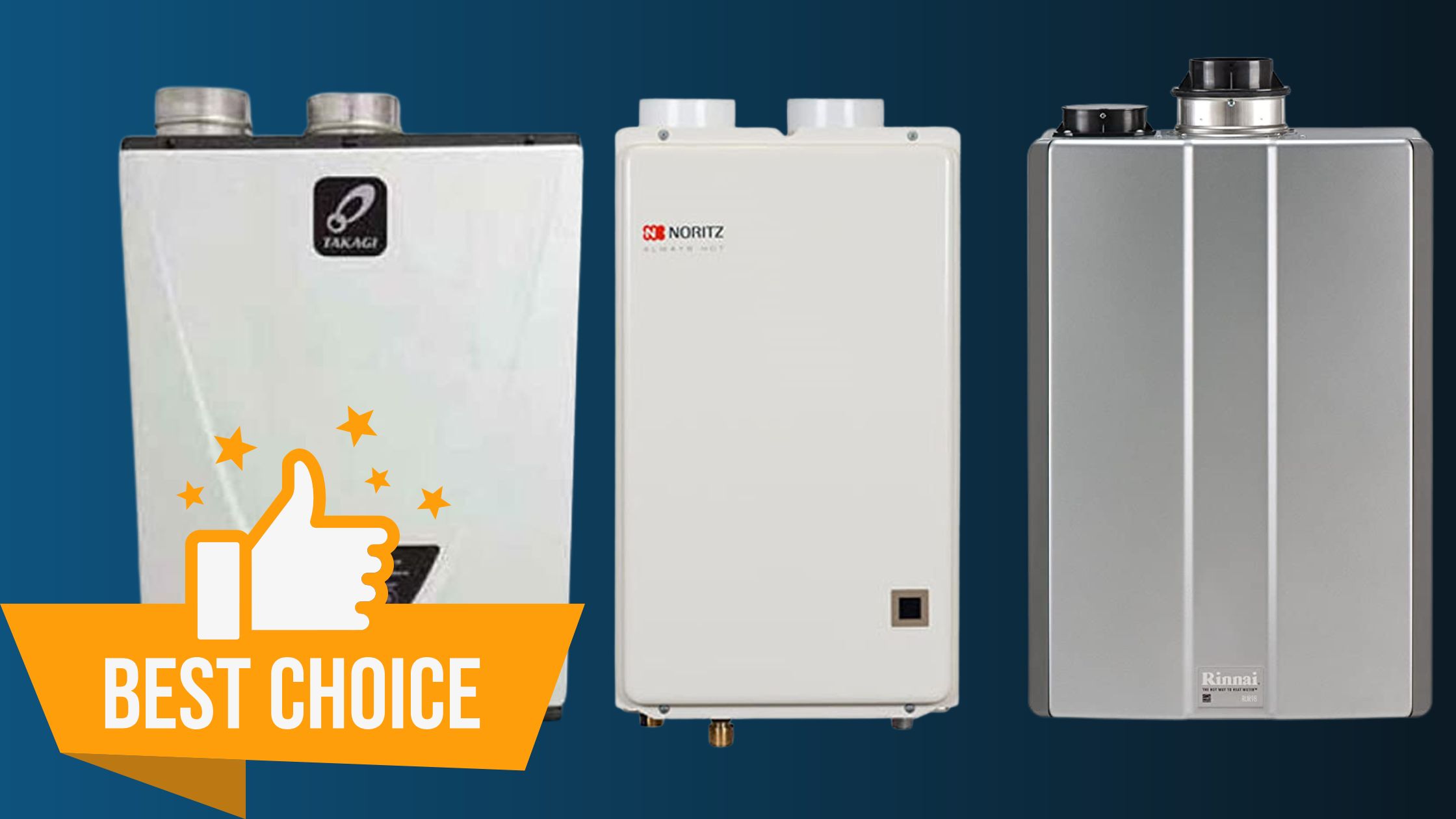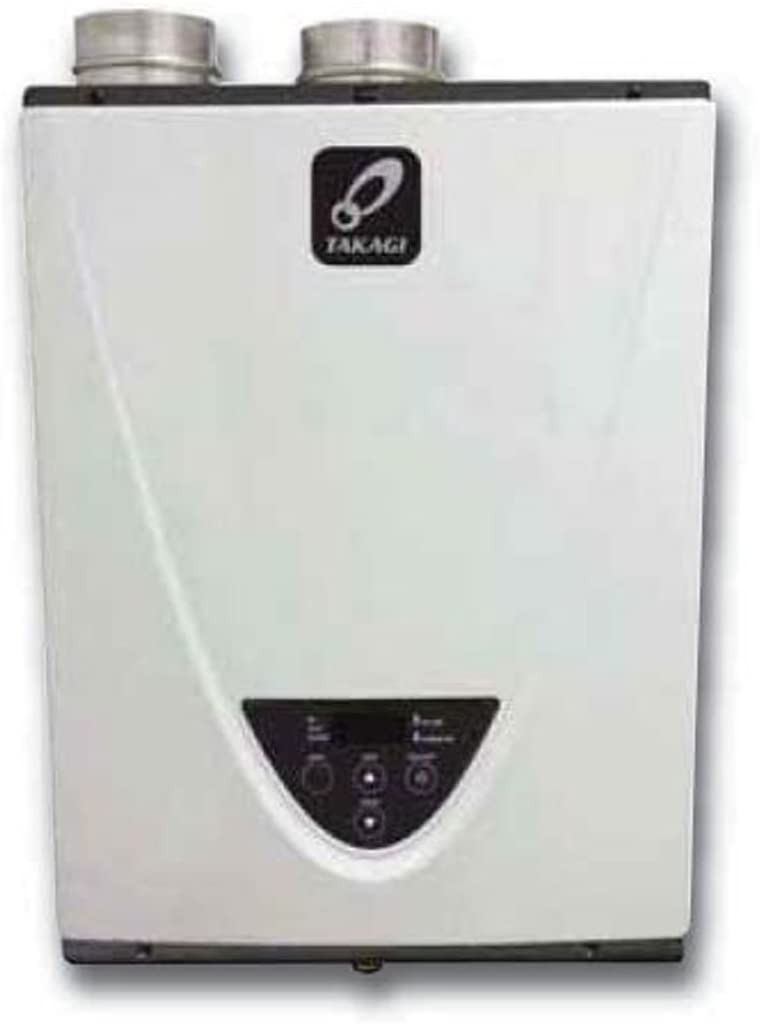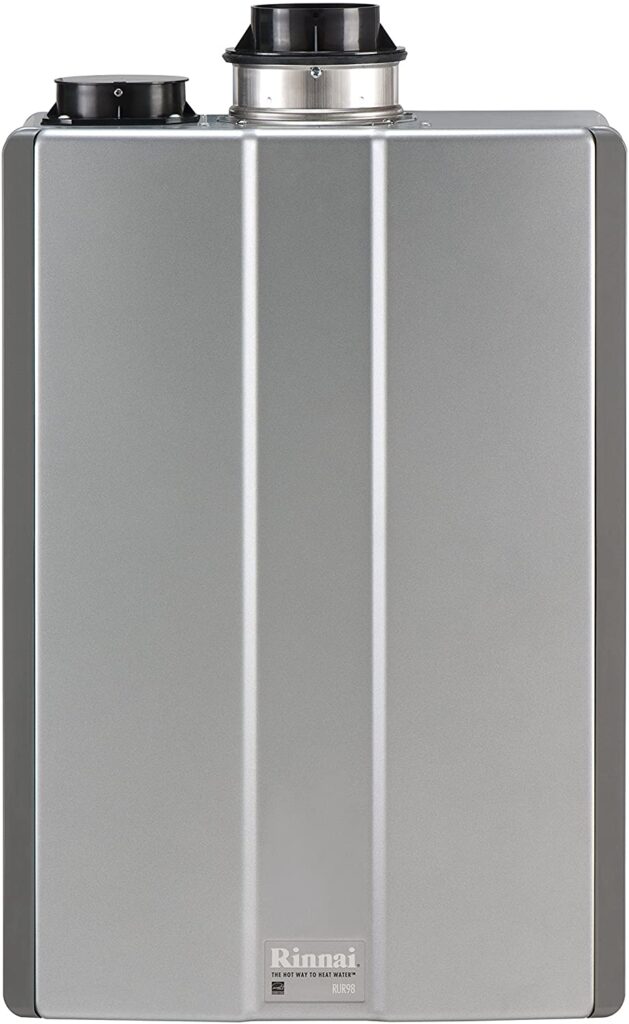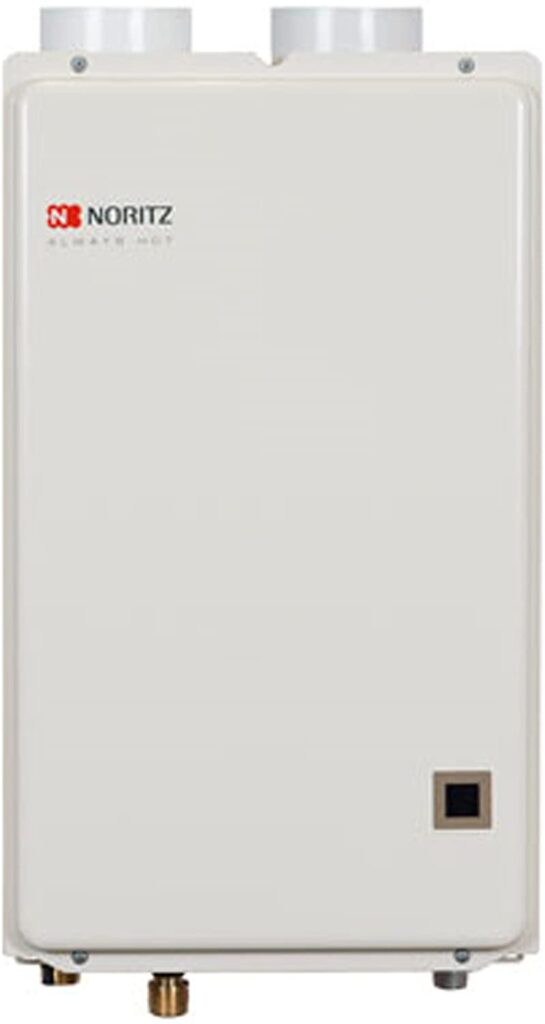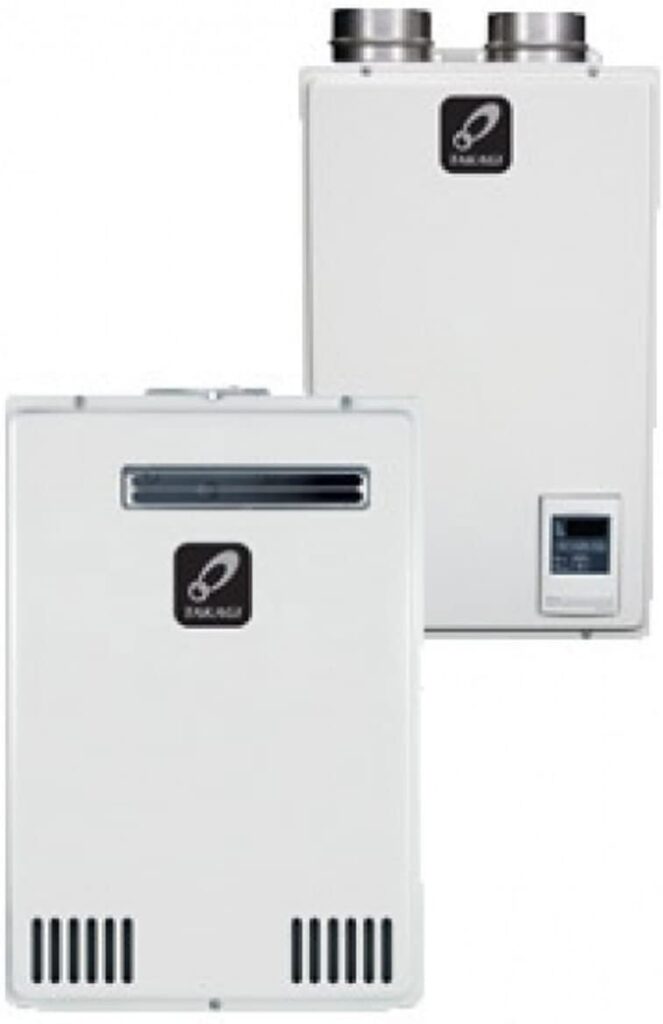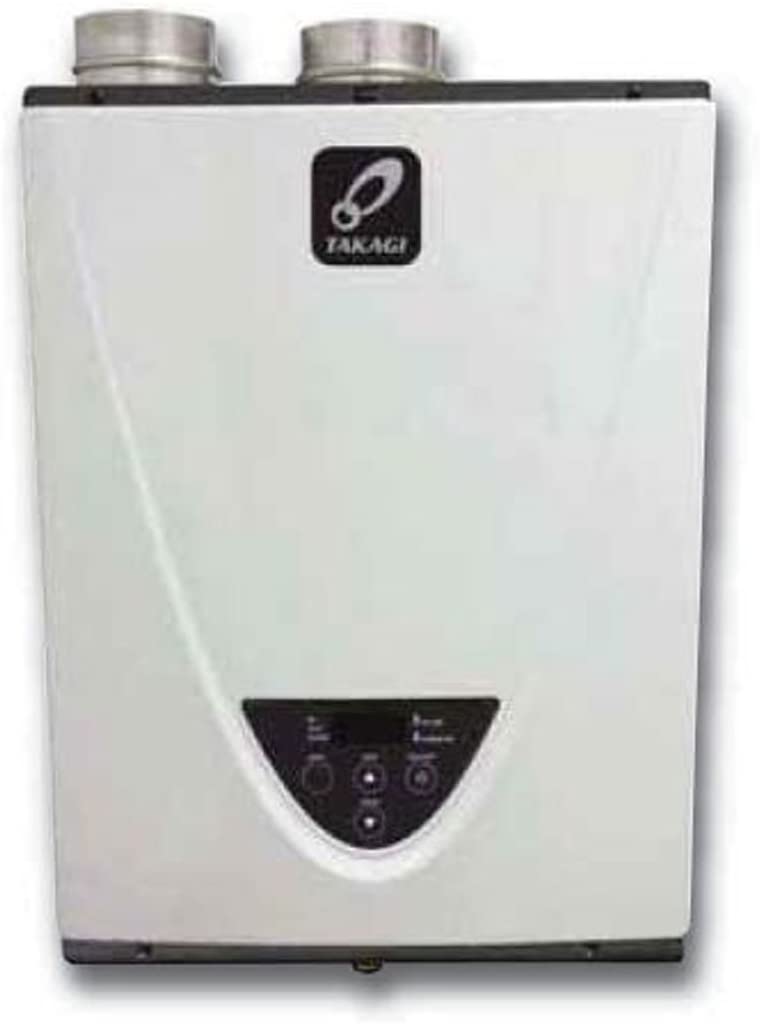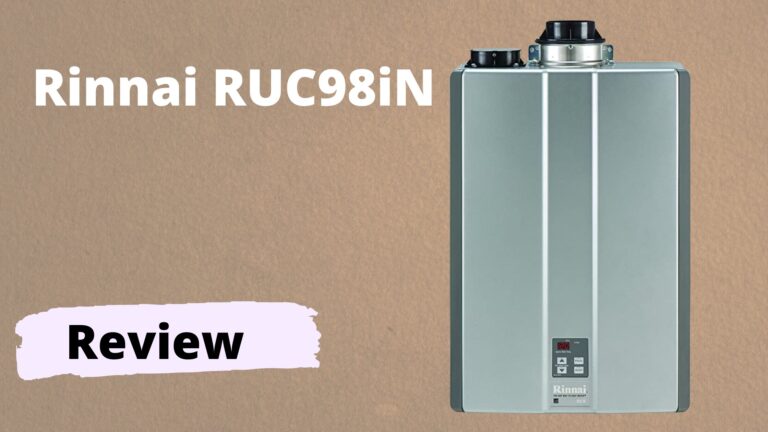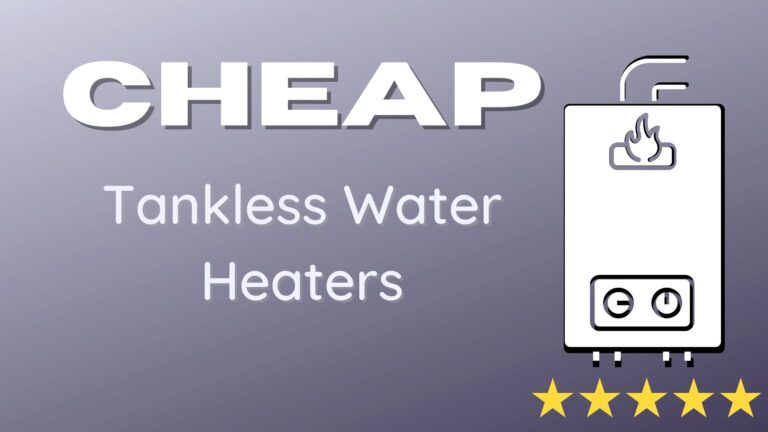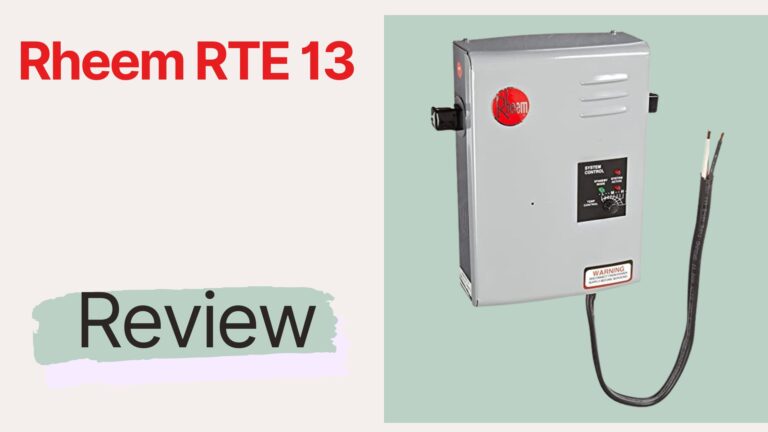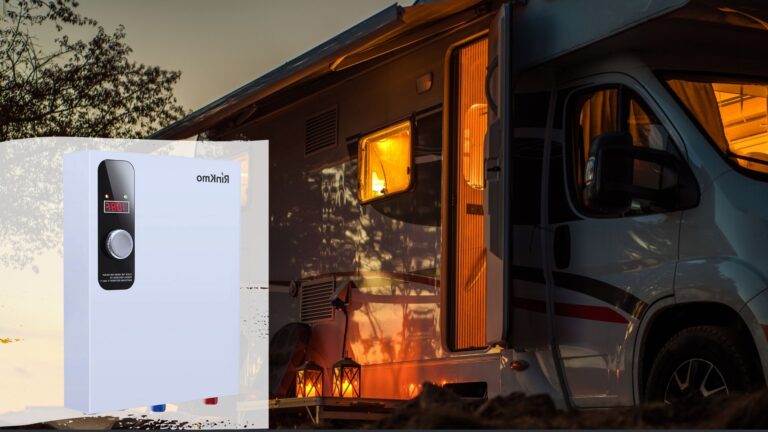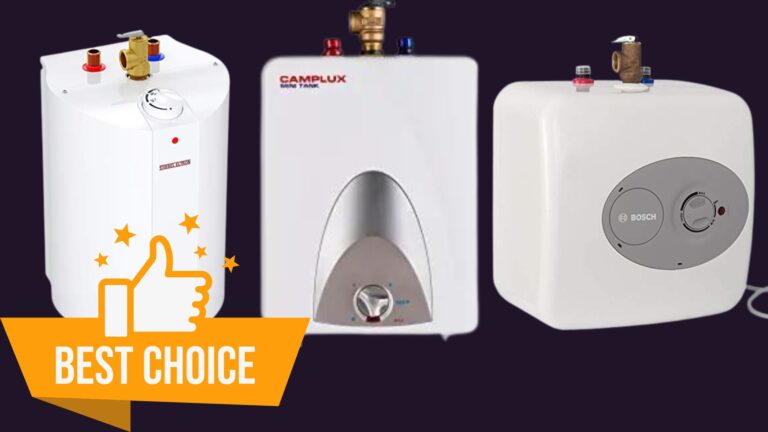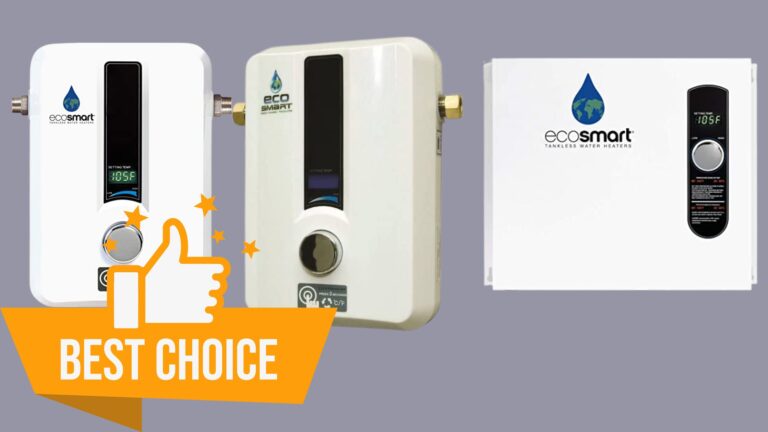Best Condensing Water Heater – Your Water Heating Solution
If you get goosebumps while thinking of replacing the condensing water heater, we can get what you went through with the one that just got damaged (Thank God it got damaged.). Last time you probably had a bad experience with the unit but who says it always has to be this way?
We get it! The loud noise while the water is getting heated, the energy bills at the end of the month were such a bummer. What’s worse, the water used to suddenly get hot too much and the next thing you know, you’re feeling the burn.
Push your disappointments for a while. You’re about to get your hands on the best condensing water heater.
When we’re saying ‘best’, we mean something that comes with more than 9 GPM of water flow, has got inner temperature control, energy-efficient and most importantly, affordable.
Excited? Let’s take you on a tour.
What is a Condensing Water Heater?

Condensing water heaters are basically gas-fueled heaters. They use a feature called ‘Condensing Technology’ which gives a boost to their energy efficiency. In fact, they’re more efficient than typical water-heaters with tanks.
These heaters use their ‘waste’ heat (which the flue gas extracts) to make sure the incoming water gets preheated. The fuel gas, in this extraction process, gets condensed into a liquid. Now you can guess why they call it ‘Condensing Water Heater’.
Condensing Vs Non Condensing Tankless Water Heater

Before you jump into the reviews, you might want to know the difference between condensing and non-condensing tankless water heaters. The reason we’re talking about this is to let you choose if you really should go for a condensing tankless water heater or stick to a non-condensing one.
Efficiency
When it comes to efficiency, condensing water heaters are the perfect catalyst. Most of the condensing water heaters are 90% efficient while you’ll probably be stuck at 80% if you choose a non-condensing one. However, compared to electric water heaters, both are super-efficient.
Environment
Since both the condensing and non-condensing water heaters are gas-fueled, they release toxic vapors that blend in with the air and yes, it’s just a negligible amount. However, condensing water heaters tend to create a lower carbon footprint.
Longevity
If you maintain gas-powered water heaters properly, whether it’s condensing or a non-condensing one, they’ll easily survive for 20 years. However, both types have different parts in them that may wear out.
We can’t really say over here whether the condensing ones will wear out faster or the non-condensing ones. It depends on the components of the models, rather than the heater themselves.
Savings
Condensing water heaters recycle the byproducts they have and turn them into extra heat. For which, they save more money. In fact, you can recycle the byproducts into the water lines if you connect the condensation line correctly that way. This will reduce your water bills as well.
Investment
While non-condensing water heaters are a bit on the affordable side, condensing models can make you break your bank. Besides, the maintenance cost over the year may seem a bit pricey to you if you go for condensing water heaters.
Best Condensing Water Heater Reviews
So after pulling our hairs a lot and doing a lot of research, we’re here with the top 5 condensing water heaters available in the market. It’s time for you to do your homework and take your pick.
1. Takagi TH3DVN Condensing Water Heater
If you’re into water heaters for a long time, there’s no way you haven’t heard the name of Takagi. This giant has made it to the pinnacle over the years and now it comes with the high-end TH3DVN, a condensing water heater unlike anything else the brand has come up with. Do you want to see if it’s going to blend in with your taste? Let’s check it out.
The first reason you’ll probably like this is because it’s not just another bulky water heater. Thanks to the compact shape it shows off, the TH3DVN doesn’t eat up too much space.
As for the functionality, the water heater churns out a high-flow rate. Compared to the typical ones in the market, this son of a gun can provide much more water and that too at an amazing flow.
With the 10 GPM, the TH3DVN can equate not just one but as much as 5 showers at a time. Cool right? Doesn’t matter if you’ve got a large family, this boy right here can fill your cup.
On top of that, there’s this commercial copper alloy that the primary heat exchanger utilizes. This makes the water-heater one-of-a-kind for providing 25 times better heat transfer than you can usually get from stainless steel.
Don’t worry about energy bills though. With 190,000 BTU, this unit will save your energy bills unlike anything else.
Even after all these, the water heater emits a very low amount of NOx. For which, you’ll be able to reduce your carbon footprint. No, don’t think even for a second that the water heater is very complicated to use though because it’s not.
The digital interface is easy-to-use and no rocket science even for a novice. As for your safety, you’ll have protection against freezing, surging and overheating. The best part? The safety features are completely computerized.
Pros
- Comes with a compact shape, saving space of your room
- Provides you high water-flow rate and equate 5 showers at a time
- Utilizes commercial copper allow for 25 times better heat transfer
- Emits very low amount of NOx
- Comes with an easy-to-use digital interface
- You’re getting computerized safety features
Cons
- Sometimes it makes a loud noise as you heat the water
2. Rinnai RUR98iN
So, you kinda liked the water heater from Takagi but you want to go for something that comes from a different brand. Well, maybe something like the water heater from Rinnai will blend in with your taste. This time they’ve brought their new charmer, the RUR98iN. Let’s see if it suits you.
You see the design? The slender aesthetic talks poshness. If you take a look at it, you’ll know that it doesn’t cover much of a space. The stainless-steel construction is all about sturdiness and durability. It gets even better with the chrome-plated handle.
Install it in your home and turn it in, you’ll love the quiet operation. Within minutes, you’ll get on-demand hot water streaming at you.
Now, there’s one thing that makes the RUR98iN stand out compared to others; it’s the Recirculation Technology that uses 199,000 BTU of power.
Thanks to this feature, there’s no need for you to use any special return-line to make sure the water flow stays warm. Rather, you’ll get endless hot water and that too with 96% energy efficiency; YOU’VE READ THAT RIGHT!
And guess what? The RUR98iN from Rinnai makes sure you don’t get gushed by red-hot water suddenly. The credit goes to the internal temperature controller. It keeps the temperature from 98 to 140 Fahrenheit.
Just in case you think the water is too hot for you, you can use the digital controller to change the temperature. Or, you can just use the remote controller to make it easy for you.
To add more safety, the makers have included boiling protection, over-current protection and frost protection features. It also has RPM-check to keep track of the internal fans.
As for the flow rate, you’ll get as much as 9.8 gallons per minute, which we think, is more than enough for your large family.
Pros
- Stainless-steel construction makes the water heater robust and sturdy
- The operation is very quiet, so you don’t experience any nerve-racking noise
- Recirculation Technology serves you endless hot water
- It’s 96% energy efficient, making sure you can save energy bills
- The internal temperature controller keeps the temperature from 98 to 140 Fahrenheit
- You can control the temperature either by digital controls or by remote
- Serves you 9.8 gallons of hot water per minute
Cons
- Your house has to be compatible to the Recirculation Technology
3. Noritz NRC66DVLP
Noritz has been on the pinnacle as it doesn’t fail to produce high-end water heaters with innovative features and mind-boggling quality. And if you put together, aesthetics, design, features and durability, you’ll probably get something like the NRC66DVLP.
The first thing that will probably catch your eyes is the shape of this water heater. Compared to the previous ones we’ve just reviewed, this one is a bit on the slender side, saving more space of your room ( or shall we bathroom?)
Judging by its shape, it’s pretty obvious that the NRC66DVPL will have less space in it. But there’s no way you’ll get disappointed since it’s pretty much enough if you’ve got a medium-sized family. Just turn it on and see what it feels like to get as much as 6.5 gallons of water flow per minute.
Speaking of controlling it, who says you need to go in front of the heater every time you just want to change the temperature?
You can use the remote-control system it comes with and Voila! That’s how you control it seamlessly. Plus, the set includes a 6 inches power cord, so operating it won’t be much of a problem.
And guess what? You don’t need to bat an eye about getting a sudden gush of hot water. Thanks to the built-in controller of the unit partners, the heat will always stay in control. The fact that it comes with low NOx emissions is a cherry on top.
Now don’t think even for a second that installing this unit is a hard nut to crack; not at all. You can set it up all by yourself and can vent it with PP, PVC and even with CPVS pipes and fitting.
Pros
- Shows off a very compact shape, saving more space
- 6.6 GPM is more than enough for a medium-sized family
- Produces 6.5 gallons of water per minute
- You can control it with the remote-control thermostat
- The NOx emission is pretty low
- Built-in controller keeps the temperature tolerable
- You can vent with PP, PVC and with CPVS pipes and fitting
Cons
- It can face freezing issues in colder climates
4. Takagi TH3MDVN
Here’s another one from Takagi that might suit you. This time we’ve got something compact unlike the previous one from the giant. Durability, great water flow rate, you name it, this unit stands out as a top-notch water heater.
With the ‘Ultra-Low NOx emission’ tag, you can guess what the game is all about. Yep, the amount of NOx it will emit is even lower than what you usually call ‘low.’ Meaning, you’ll get about 15 PPM of NOx emissions or less if you’re lucky. This will keep your house safe and your family harmless.
To add more safety, the manufacturers made it in such a way that it won’t overheat or freeze. There’s a surge protection system as well and you can use the troubleshooting diagnostic codes.
Turn it on and experience a high-water flow rate of 6.6 gallons per minute. However, make sure you keep an eye on the temperature though. You can constantly monitor the temperature simply by using the inlet and outlet thermistors.
Don’t worry about getting too much hot water without you even knowing it. The temperature safety control has got you covered.
When it comes to heat transfer, you’ll have 25 times better feedback with its primary heat exchanger. Why? It’s because it uses commercial-grade copper alloy. The secondary heat exchanger, on the other hand, utilizes 316L stainless steel.
And yes, it’s completely resistant to corrosion, so you won’t have to get yourself a new water heater anytime soon.
All that being said, this unit is ideal for you if you have a small family. Since it’s a natural gas water heater, it uses 120,000 BTU of gas inputs to make sure you can get enough water for 2 bathrooms in warmer climates.
Pros
- Ultra-Low NOx makes sure you get the very least amount of NOx emission
- It has got safety features that stop the heater from overheating and freezing
- You’ll get a high-flow rate of 6.6 gallons of water every minute
- Commercial-grade copper alloy and 316L stainless steel give 25 times better heat transfer
- Anti-corrosive attribute makes sure the water heater survives for years
- You’re getting 120,000 BTU of gas inputs, ideal for 2 bathrooms
Cons
- If you run it for a long time, it may make a bit of loud noise
5. Takagi TH3SDVN
We’re wrapping up our reviews with another one from Takagi. No, we’re not getting sponsored by the brand, rather we’re talking about it because the condensing water heaters from this giant is that good.
Getting Déjà vu? Yes, it looks pretty much the same as the TH3DVN we’ve reviewed before. Only this time, it has got 8 gallons of water flow per minute. If you don’t see any point to buy a unit with 10 GPM for your medium-sized family, this beast right here could be your pick.
Besides, the BTU is less than what you’ll get from its doppelganger. You’re getting 180,000 BTU of gas inputs that will prepare endless hot water for you.
As a result, it’s going to be a little bit less efficient when it comes to heating the water, but you’ll pass through. Keep in mind that it also means that you’ll be paying a bit more electricity bills at the end of the month.
Apart from the GPM and BTUs, it’s pretty much the same as the TH3DVN. You’ll get all the computerized safety features that will save the heater from freezing and overheating.
Let’s not forget it’s got copper alloy (commercial-grade obviously) which the primary heat exchanger efficiently utilizes. As a result, you get to experience a 25x better transfer of heat compared to what you can usually get in the case of stainless steel.
Speaking of steel, the secondary heat exchanger doesn’t disappoint you at all by utilizing low-end stainless-steel material. Rather it uses 316L stainless steel which guarantees you anti-corrosive feedback for years.
Even though this unit is a bit on the heavy side; thanks to its compact shape, it doesn’t eat much of a space.
Pros
- 8 Gallons of GPM is enough for a medium-sized family
- With 180,000 you’re getting endless hot water production
- Commercial-grade copper alloy gives you 25x better heat-transfer
- Computerized safety features prevent overheating and freezing
- It has got a compact shape so it won’t eat too much space
Cons
- A bit on the heavy side
Things to Consider Before Buying the Condensing Water Heater
So you want to buy the perfect condensing water heater. Great! But do you know what features you need to look for before making the purchase? If your answer is ‘No’, chances are you’ll end up buying the wrong product.
To make sure you get the right condensing water heater, we’re here with the things you need to choose before buying it. We won’t be talking about all the factors here, but only the most important ones.
Built-Quality
Not just water heaters, durability is something that you’ll need when it comes to anything. The better the material, the longer it will survive; well, at least, it can take a beating.
Condensing water heaters that are made of stainless steel can be your best bet. These are durable and sturdy. Of course, we vouch for the anti-corrosive stainless steel. Fortunately, our water heaters right here are made of solid stainless steel material and most of them are resistant to corrosion.
Flow Rate
Typical water heaters don’t have a great amount of flow rate and it’s disappointing. The more the flow rate, the better the hot water supply you’ll get. Now, if you have a small or medium-sized family, we think going for a water heater that comes with at least 6.6 GPM of water flow is mandatory.
To be in the safe zone, you can go for 8 GPM for a medium-sized family though. It’s because if you go for 6.6 GPM, you’ll have to count each drop of water. On the other hand, if you have a large family, you should get your hands on a condensing water heater that comes with at least 9.8 GPM.
BTU
You don’t want to pull your hair when the energy bills get high, do you? Getting a condensing water heater with enough amount of BTU can solve your problem. The more the BTU, the more efficient it will be.
Meaning, the heater will heat the water fast. This will save a lot of energy bills at the end of the month. We suggest you go for at least 120,000 BTU. To taste what efficiency actually means, you should go for at least 180,000 BTU.
Safety Features
Ensuring safety should be your thing, especially when you’re dealing with hot water. Here are a few things you need to keep in your mind.
Firstly, you should get a heater that has got internal temperature control in it. This will keep the temperature in control. Then comes the anti-freezing and anti-overheating features. With these features in the arsenal, you won’t experience any damage anytime soon.
FAQs About Condensing Water Heater
- Which water heater brand is the best?
Ans. This one is pretty difficult to answer since everyone has their preferences. However, if you ask our opinion, we’ll give our thumbs up to Takagi and Rinnai.
- What is the downside of a tankless water heater?
Ans. If you want an endless hot water supply, tankless water heaters are your thing. Besides, they’re pretty compact in shape and need low space to fit in.
Let’s not forget that they’re more in the safer zone since they don’t usually get leaked and have more durability.
However, the most noticeable downside of tankless water heaters is the upfront cost they have (we’re talking about the unit and installation cost). It’s quite higher compared to the ones with the tank.
- Do tankless water heaters need to be flushed?
Ans. We recommend you flush the tankless water heater once every year. You can flush it using food-grade white vinegar. Otherwise, the heater will grow debris and calcium on the filters and the elements inside it.
Wrapping Up!
We’re having a hunch that you’ve already chosen the best condensing water heater for you. However, if you’re still confused, we may play our part a bit? You see, the Takagi TH3DVN is the topper according to us and you probably know it by now.
However, if it wasn’t for the GPM, we would vouch for the Rinnai RUR98iN, which we can tell. Both the water heaters are worthy rivals of each other and deserve to be number 1. But like we said, we’ve kept Rinnai RUR98iN in the 2nd position for its GPM.
So, you decide whether you’ll take one from these two or you’ll pick a heater from the other three units.

